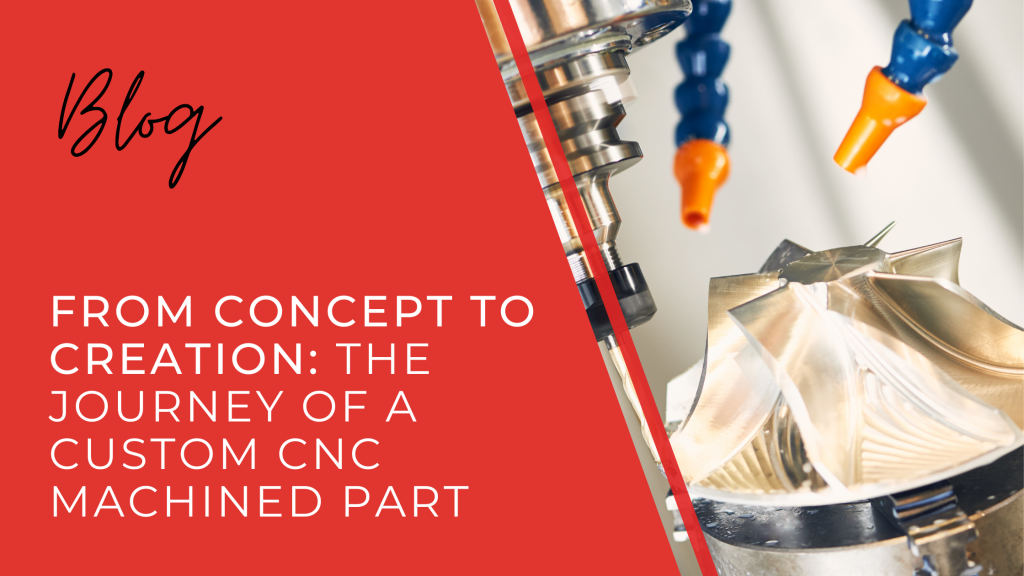
In today’s fast-paced manufacturing world, custom CNC (Computer Numerical Control) machining is leading the way in precision engineering. Whether it’s for aerospace, automotive, medical devices, or electronics, industries need custom components that are crafted with exact precision. So, let’s take a journey through the detailed process of creating a custom CNC machined part—from the initial concept all the way to the final product—and see the expertise and precision that make it all happen.
Step 1: Concept and Design
The journey of every custom CNC machined part starts with an idea. Engineers and designers transform this idea into a detailed digital blueprint using CAD (Computer-Aided Design) software. This design phase is crucial, as it sets the foundation for the entire process. It involves defining every detail of the part, including dimensions, shapes, and tolerances. During this phase, designers often collaborate with CNC machinists to make sure that the design is manufacturable and optimized for the CNC machining process.
Step 2: Programming the CNC Machine
Once the design is finalized, the next step is programming the CNC machine. CNC programmers translate the digital blueprint into a series of commands that the CNC machine can understand. Using CAM (Computer-Aided Manufacturing) software, they create a CNC program, which includes instructions on how the machine will move, the speed of the cutting tools, and the precise sequence of operations. This programming phase is critical; it ensures that the CNC machine can accurately replicate the design, down to the smallest detail.
Step 3: Material Selection
With the design and program ready, it’s time to choose the right material for the job. The selection of material depends on the component’s application, required strength, weight, and durability. Metals such as aluminum, steel, and titanium are commonly used in CNC machining due to their strength and machinability. For other applications, plastics or composites might be more appropriate. The chosen material is then sourced and prepared for the machining process, ensuring it meets the required quality standards.
Step 4: CNC Machining Process
Now, the magic happens. The selected material is mounted on the CNC machine, and the machining process begins. Here are some common CNC machining techniques:
CNC Milling: This technique uses rotating cutting tools to remove material from the workpiece. It is versatile and can handle parts of various sizes and complexities. CNC milling is ideal for creating flat surfaces, slots, holes, and intricate 3D shapes.
CNC Turning: In this process, the workpiece is rotated while a cutting tool shapes it into the desired form. It’s especially effective for creating cylindrical parts, such as shafts and rods.
5-Axis CNC Milling: This advanced method allows the cutting tool to move along five different axes, enabling the creation of complex, multi-angled parts with high precision. It’s perfect for parts that require intricate detailing from various angles.
CNC Swiss Turning: This technique is used for producing small, high-precision components. The workpiece rotates while multiple tools work simultaneously to achieve complex geometries.
The CNC machine follows the program’s instructions with incredible accuracy, cutting, shaping, and drilling the material to form the desired part. The precision of CNC machining allows for tight tolerances and intricate details that would be challenging to achieve through manual processes.
Step 5: Quality Control and Inspection
Quality is paramount in CNC machining. Throughout the process, machinists and quality control inspectors continuously monitor the part’s dimensions and tolerances. Advanced measurement tools, such as CMMs (Coordinate Measuring Machines) and laser scanners, are used to ensure the part meets the specified requirements. Any deviations are corrected immediately, ensuring the final product is as close to perfection as possible.
Step 6: Finishing Touches
Once the machining and quality control are complete, the part may undergo additional finishing processes, such as deburring, polishing, or coating, to enhance its appearance and functionality. These finishing touches not only improve the part’s aesthetics but also add an extra layer of durability or corrosion resistance, depending on the application.
Step 7: The Final Product
After all the steps are completed, the custom CNC machined part is ready for its intended use. It could be a component for a complex medical device, a critical part for an aerospace assembly, or a precise tool used in electronics manufacturing. Whatever its purpose, the journey from concept to creation ensures that the part meets the highest standards of quality and precision.
Bringing Your Vision to Life
Creating a custom CNC machined part is a complex journey that requires expertise, precision, and meticulous attention to detail at every step. From the initial design to the final inspection, each phase plays a vital role in bringing the vision to life. Whether it’s a single prototype or a large-scale production run, the CNC machining process is a testament to the power of technology and skilled craftsmanship.
Looking for high-quality CNC machined components? Visit United Tool, LLC today! With over 60 years of experience, we pride ourselves on exceeding customer expectations with precision machining services tailored to your needs. Whether you need horizontal or vertical machining, Swiss machined components, or customized stocking programs, we’ve got you covered.
Call us at (262) 347-2004 or email sales@unitedtoolllc.com to schedule a tour of our state-of-the-art facility. Discover how we can streamline your manufacturing process and deliver superior value.
